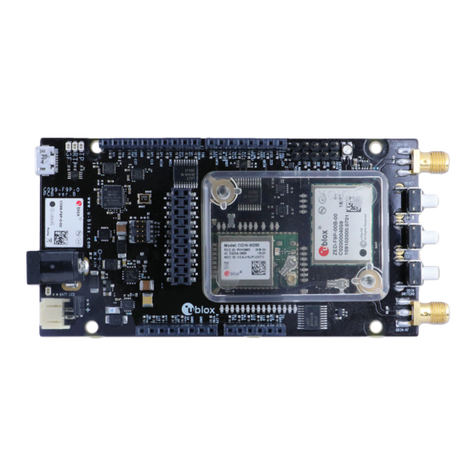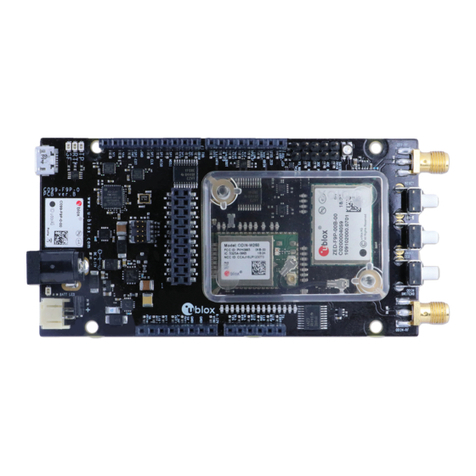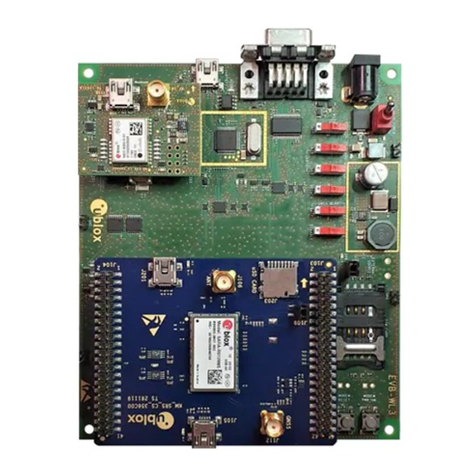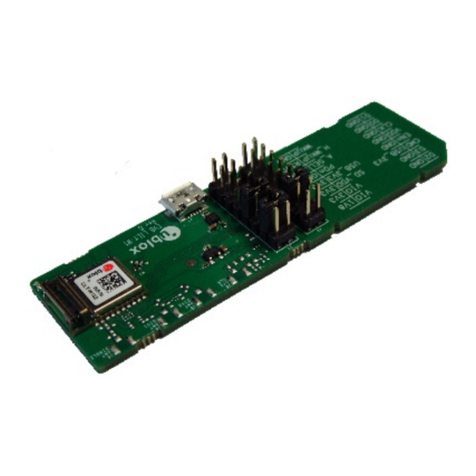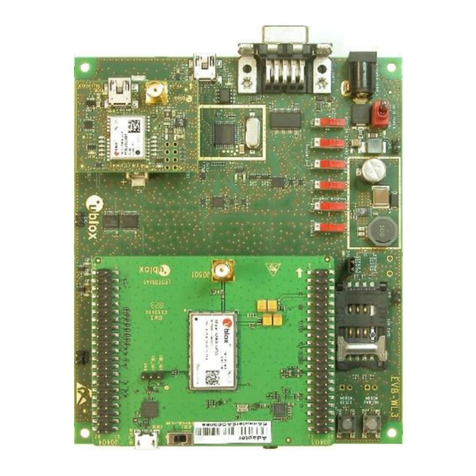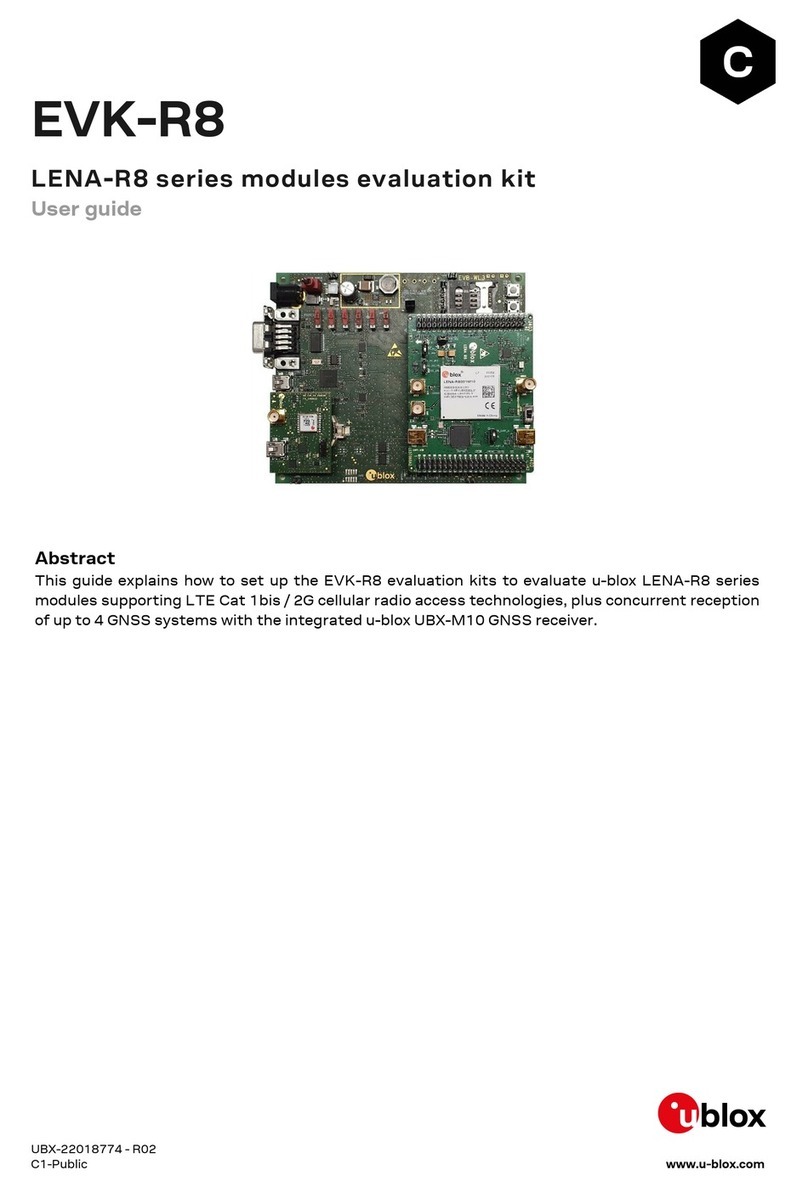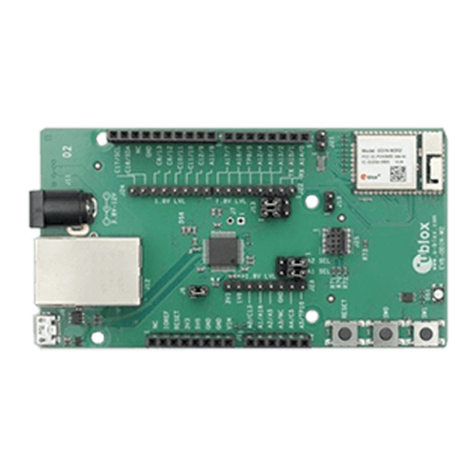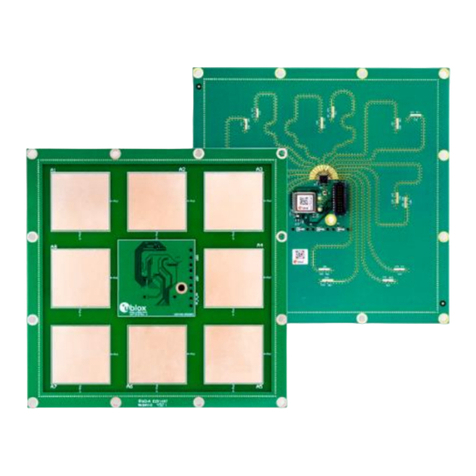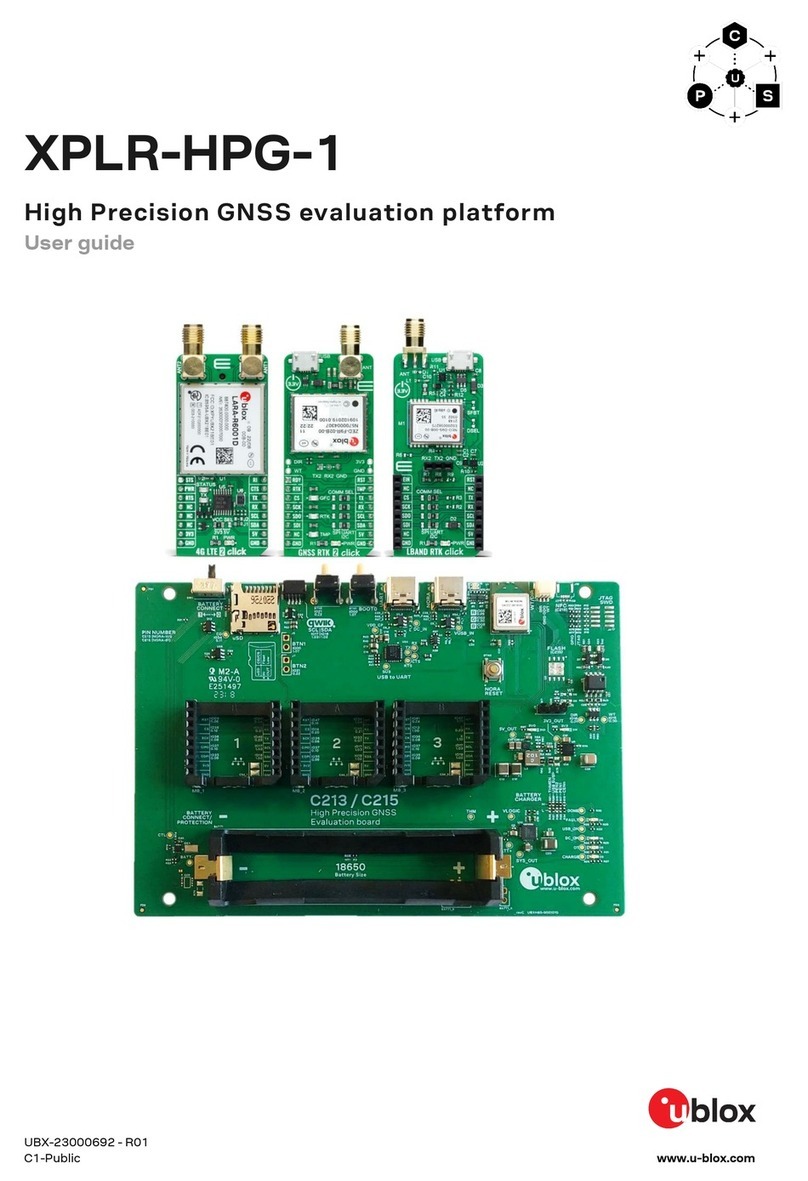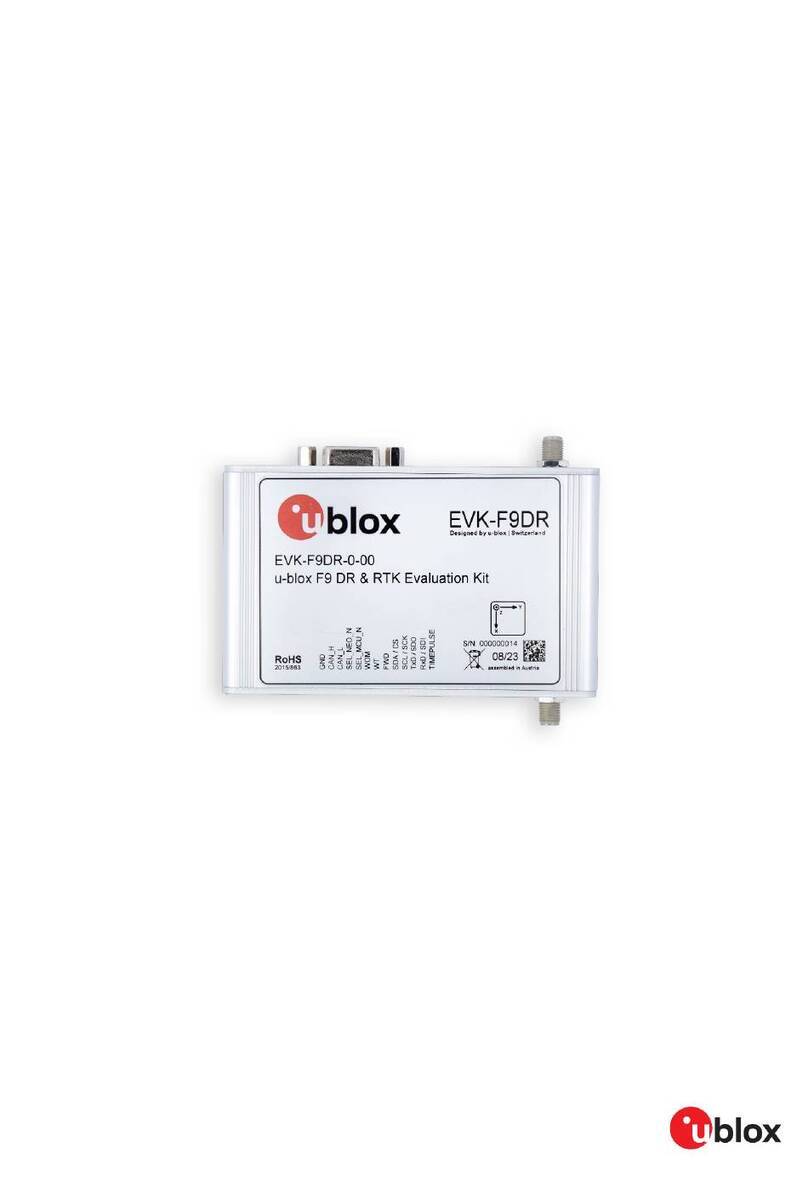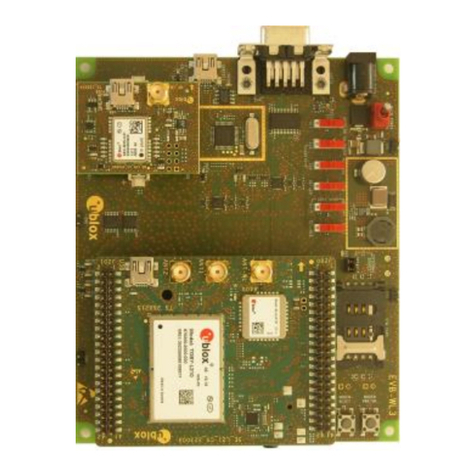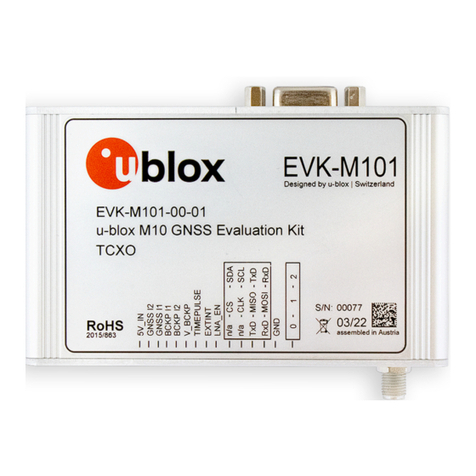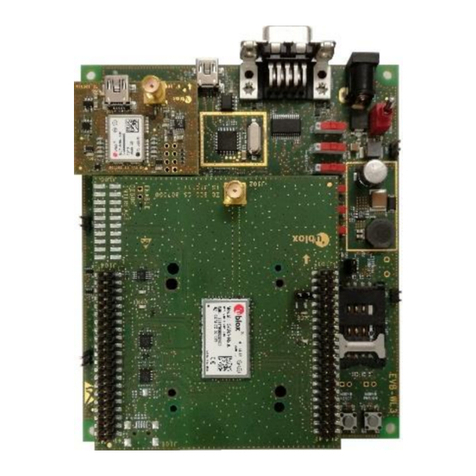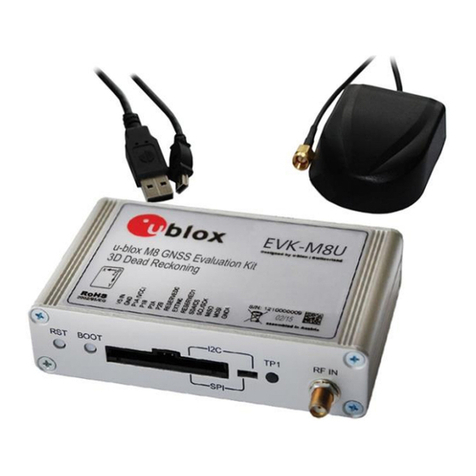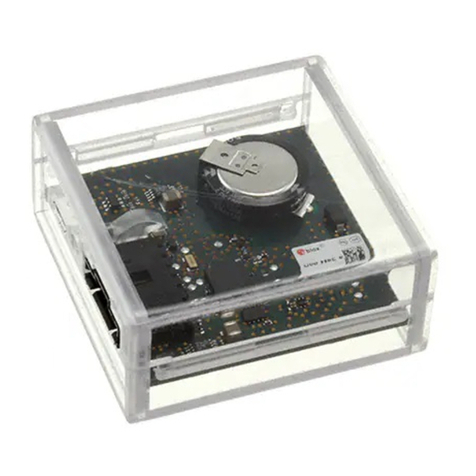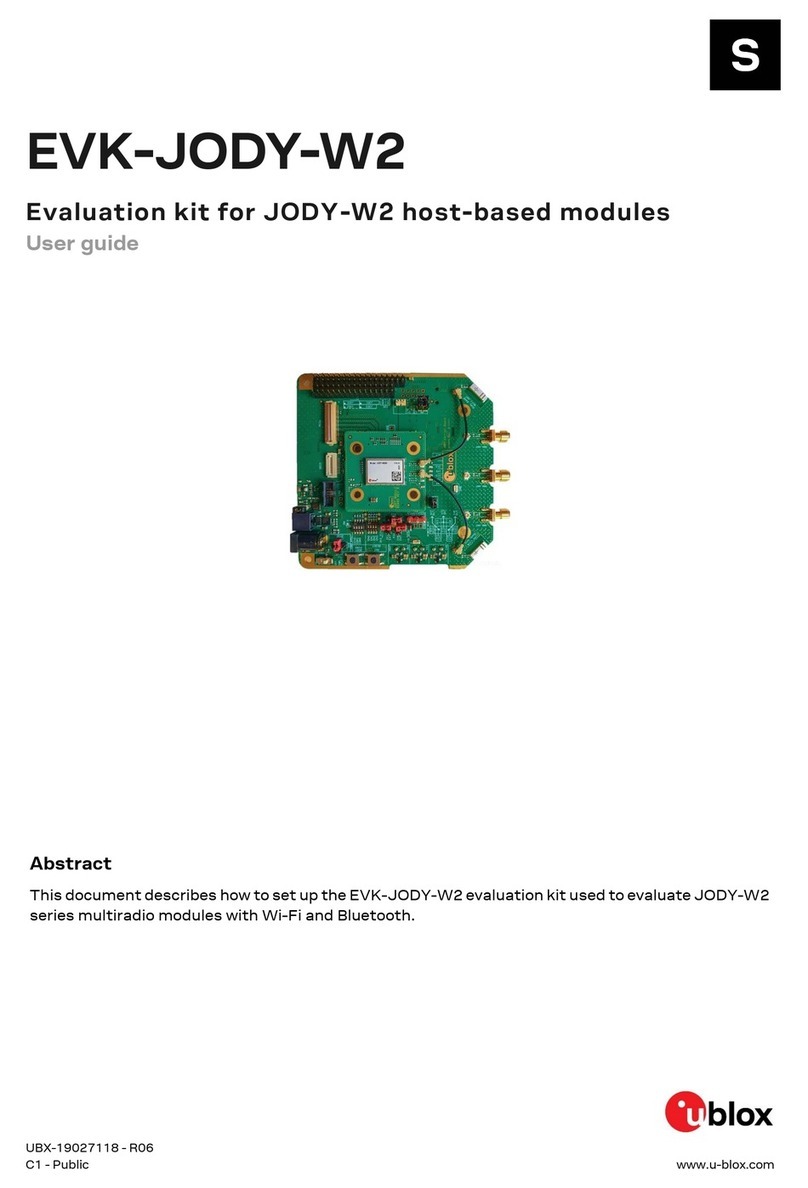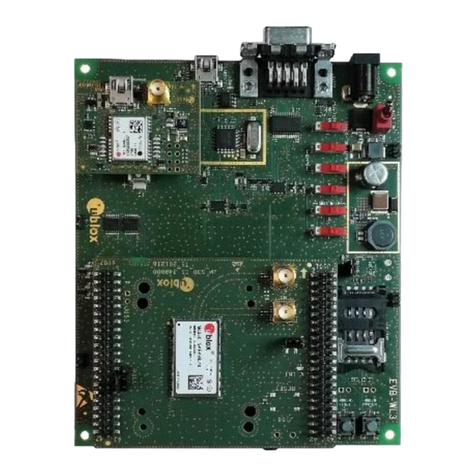
UBX-21008123 - R02 Quick start guide Page 3 of 42
C1-Public
Contents
Document information .............................................................................................................................2
Contents .......................................................................................................................................................3
1Quick start guide.................................................................................................................................5
1.1 Installing s-center evaluation software.................................................................................................. 5
1.2 Installing J-Link drivers .............................................................................................................................5
2Product description............................................................................................................................6
2.1 Overview........................................................................................................................................................6
2.2 Kit includes...................................................................................................................................................7
2.3 Key features .................................................................................................................................................7
2.4 EVK-ANNA-B4 block diagram ..................................................................................................................9
2.5 Connectors .................................................................................................................................................10
3Setting up the evaluation board.................................................................................................. 11
3.1 Software and hardware preparation.....................................................................................................11
Installing software............................................................................................................................11
Connecting external antennas.......................................................................................................11
Power on evaluation board..............................................................................................................11
Assigning COM ports.......................................................................................................................12
3.2 Starting up .................................................................................................................................................12
EVK-ANNA-B412 ..............................................................................................................................12
EVK-ANNA-B402 ..............................................................................................................................12
3.3 Measuring current consumption...........................................................................................................13
Using an amperemeter....................................................................................................................13
Using a voltmeter .............................................................................................................................13
Using an external power supply or power analyzer....................................................................14
4Board configuration......................................................................................................................... 15
4.1 Powering options.......................................................................................................................................15
Selecting the power configuration jumpers................................................................................15
Default power configuration, 3.3 V ...............................................................................................17
Battery powered, 3.0 – 1.7 V...........................................................................................................19
Battery powered with protection diode, 2.7 – 1.7 V...................................................................20
External supply, 3.6 – 1.7 V.............................................................................................................21
Raspberry Pi HAT..............................................................................................................................22
4.2 Disconnecting ANNA signals from board peripherals.......................................................................23
5Interfaces and peripherals ............................................................................................................ 25
5.1 Buttons and LEDs.....................................................................................................................................25
5.2 Arduino interface ......................................................................................................................................26
Arduino shield compatibility...........................................................................................................28
5.3 Raspberry Pi compatible interface ........................................................................................................28
Powering considerations.................................................................................................................31
UART ...................................................................................................................................................31
